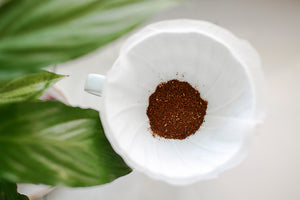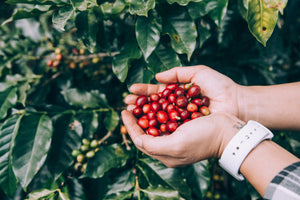
A History of London Coffee in Five Parts
Part One: Setting the Scene
I wrote this back in 2012 and have often wondered about putting it out there. A Timeline of the rise and rise of London Progressive Coffee. Why do this? Well in the last very few years the independent coffee scene has massively blossomed. When I first got involved I struggled to find 20 decent places, now there are many that are decent and a fair number that excel. People joining the London scene now may not be aware of how it developed, especially between 2007 and 2010 and there is a danger it will remain undocumented and that others could come later and write their own history very different from the facts.
I believe the current scene results from the convergence of a number of factors: a generally open and untapped market; the influx of migrants from New Zealand and Australia, the influence of Scandinavian coffee through key people and geography, major coffee competition victories by key Londoners, the stagnation of the pub scene, the ‘artification’ of the east end (this was pre-gentrification) giving rise to a new young market, the rise of Direct Trade, the groundbreaking effect of the coffee chains (much as we may choose to deride them, they weaned a generation onto espresso based drinks), probably also the recession (as barista Ben Drury describes, coffee was an affordable luxury in a time of wallet tightening) and in the mid-2000s a lot of suitable properties became vacant.
Before we can get to the recent history we need to give some background.
Backstory – Origins (pre 1978)
The origin of coffee as a drink is in Ethiopia most likely in or before the 13th Century, with much debate about the validity of sources referring to earlier uses. Coffee first arrived in the UK in the 16th Century with the first coffee houses in the 1650s via Europe and, before that Turkey and the Middle East. By 1675 there were over 3000 coffeehouses in England. The penny universities as they were called were places of open exchanges of ideas (at least for men) and some grew into the foundation of large companies. They were accessible to all social classes in an almost unique moment in England’s history of ‘class-mixing’. Dr Matthew Green writes and talks brilliantly about this period of our history. They were considered challenging for the establishment who made a number of attempts to stop the coffee fad. The actual reason for their 18th Century decline is unclear and a salient warning to today’s coffee bubble. Possibly coffeeshop owners over-reached themselves by offering unsustainably low prices. Other sources talk of a desire by the coffeeshop owners to control the entire print media business of the time. Most influentially, the nobility went to their newly established gentlemen’s clubs and the lower classes presumably could not pay enough to sustain the coffeehouses.
Probably the largest impact was a large scale outbreak of coffee rust fungus on the coffee plantations in Sri Lanka (then Ceylon) and their replacement with tea plantations. Tea went on to be marketed hugely succesfully by the East India Tea Company and to replace coffee in British affections. Given the relative genetic homogentity of speciality coffee and the effects of gobal warming - this is a warning we should consider.
Coffee was to have another London boom in the mid-20th Century. The legendary Bar Italia opened in Soho 1949 (it’s still there and worth visiting for history although a better standard of classic Italian espresso is to be found at the newer Bar Termini in Old Compton Street). The 1950s and 60s saw an explosion of Italian espresso bars as punters enjoyed frothy cappuccinos using the new Gaggia machines which had hit London. The places that opened were as important as places to hang out for that new invention – the teenager. Look out for the Algerian Coffee Store too, open since 1887 and still doing business.
Backstory – Pioneers (1978 – 1996)
Monmouth Coffee Company began roasting in 1978, emphasising sustainable trade and providing a variety of interesting coffees. They deserve credit for their groundbreaking role in London coffee and we all owe them big. They might not reflect the preoccupations of the current specialty scene but their own path is popular. Their second store (following two stalls there) opened in Borough Market in 2001.Gwilym Davies of Prufrock was one of those Monmouth baristas at the market stall where I tried to visit as often as possible. There are some great stories from this time – hidden dogs and all. Also working the stall was Jorge Fernandez who went on to found Fernandez and Wells. and Greg Costello who went on to roast for Monmouth, he was often found talking origins to customers selling retail coffee beans on the stalls and at the cafe and later founded Workhouse Coffee in Reading.
Mercanta began importing green coffee beans in 1996, developing a close relationship with growers and enabling the direct trade approach used by progressive roasters that ensures a fairer (than fair trade) deal for small farms and encourages quality. I believe the name ‘direct trade’ was initially put into use by Intelligentsia in the US but without Mercanta, London Speciality Coffee wouldn’t have been the same.
Backstory – The Mid/Late 90s Latte Wars
I grew up drinking mostly tea. When it was coffee, it was instant coffee usually. In the 1970s and 80s most British people knew coffee as the instant stuff or made filter, percolator or French press coffee often using packets of pre-ground Italian roast beans. I used to pop down to the local Italian deli and get the guy to grind me some beans fresh, then use them that week for filter. We’d also enjoy the odd cappuccino or espresso at an Italian restaurant or cafe but it was mostly a tea drinking culture. The big players saw a new, untapped market!
In the mid 1990s, Seattle Coffee Company arrived in London. Some said they were a false flag subsidiary of Starbucks to test the market but research and the say of those who were involved at the time supports that they were at first independent and only later acquired by Starbucks. Alley and Scott Svensson arrived from Seattle in London and found no sign of their favourite beverages. So they formed Seattle Coffee Company in 1993, We were regulars in their Covent Garden café. The brand spread. Jeremy Torz and Steven Macatonia, returned from discovering coffee in San Francisco in Peets (around the same time my wife introduced me to Peets) began roasting West Coast style dark roasts for Seattle Coffee Company long before forming Union Hand Roasters in 2001 (more on them later).
We enjoyed the lattes we’d had in the US. Some smelt money in the cafe business and Coffee Republic began trading in 1995 as did Costa after they had been acquired by Whitbread (Costa was originally a small family Italian business near Vauxhall and Whitbread took the name and apparently little else). Whitbread got the coffee into pubs and Cafe Nero added their bitter brews in 1997. Then it got bigger, Starbucks bought up Seattle Coffee Company’s 60 stores in 1998 and hit the UK. The next few years saw ‘aggressive’ competition including stores opening opposite existing cafes.
By the standards of the best independent coffee, chain coffee was and remains disappointing but the chains provided a useful service to the independents as they wooed us Brits onto espresso based drinks and when we tasted something better at the independents, boy we were ready! It’s a great reminder of what the chains have to offer when you visit Starbucks high end Reserve store to taste their best beans or Costa’s new flagship store in Covent Garden where you can order a medium roast v60.
Coming next: part two – Rumblings from the Independent Scene featuring Union, Hasbean, Londinium and the birth of the London Antipodean café: Flat White, Sacred, Climpson & Sons…
Article by Phil Wain - Former Editor



